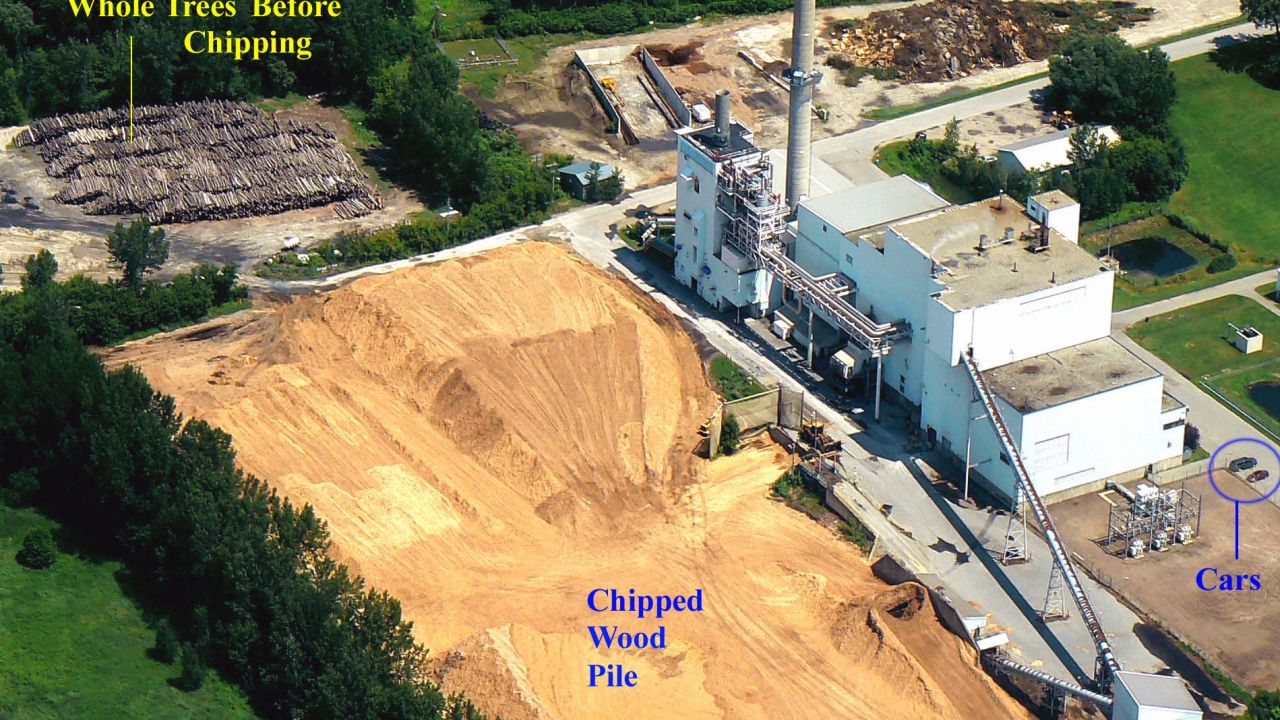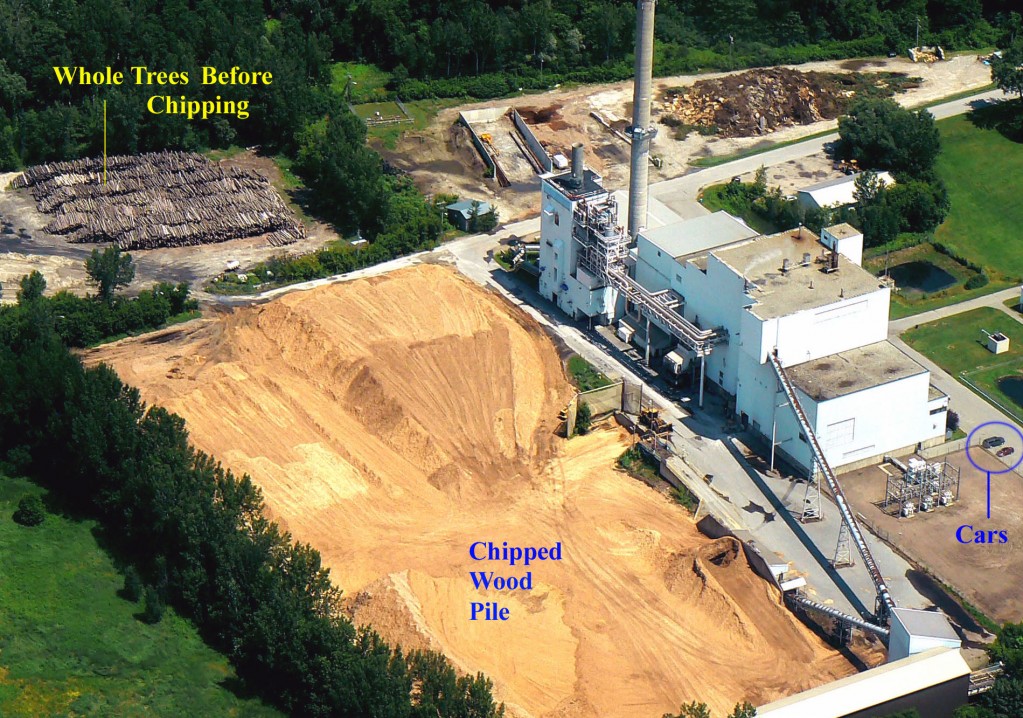
By Mary S. Booth, Ph.D, and Alex Formuzis, EWG Vice President for Media Relations
Life would be so much easier for biomass industry executives if they didn’t have to worry about their own words.
It was hardly a surprise when the head of the Biomass Power Association, Bob Cleaves, went on the attack last week (June 16) in response to Environmental Working Group’s (EWG) report that projects a massive increase in forest cutting to provide fuel for biomass-fueled power plants being built around the country.
Contrary to the report, Cleaves emphasized that [the Biomass Power Association] and its members do not advocate harvesting trees for energy production, and the vast majority of biomass facilities utilize wood waste material and industry byproducts to produce clean energy… [The Biomass Power Association] said they are not aware of any facilities that use whole trees for energy.Power-GenWorldWide (biomass trade publication), June 17, 2010
But Mr. Cleaves’ comments had us scratching our heads. You’d think he would know what his member companies use for fuel. After all, several biomass power plants that the Biomass Power Association represents declare openly on their websites that they use wood chips from whole trees.
Mr. Cleaves also sought to create the impression that the use of whole-tree fuel is prohibited at biomass-burning facilities that receive federal tax breaks, but there is no such language in the IRS code.
To set the record straight, EWG compiled these statements, from the biomass industry itself, showing that whole-tree harvesting is a primary source of fuel and will continue to be, despite what Mr. Cleaves claims:
EXHIBIT A: Evidence that whole tree chips are a common fuel for existing power plants, including members of the Biomass Power Association
1. Massachusetts: “The Fitchburg Power Station is a 17 MW waste wood- and landfill gas-fired power facility. The facility burns whole-tree chips.”2. New Hampshire: “Tamworth Power Station is a 22.5 MW waste wood power facility… the facility uses wood from trees unsuitable for lumber or pulp.”
3. New Hampshire: “The Bethlehem Power Station burns low quality wood, which is continuously replenished through the natural forest cycles. The facility uses approximately 675 tons (per day) of whole-tree chips.”
4. Vermont: “The Ryegate Power Station burns 250,000 tons of whole-tree chips per year.”
5. Vermont: McNeil Station (Burlington Electric) “Seventy percent of the wood chips that fuel the McNeil Station are called whole-tree chips and come from low quality trees and harvest residues. The trees, a majority of which are on privately owned woodlands, are cut and chipped in the forest... To run McNeil at full load, approximately 76 tons of whole-tree chips are consumed per hour. That amounts to about 30 cords per hour (there are about 2.5 tons of chips per cord of green wood).”
McNeil Station, Vermont. Photo by Chris Matera, Massachusetts Forest Watch.
EXHIBIT B: Evidence that whole trees will be the fuel of choice for future biomass power
1. New Hampshire, Laidlaw Energy: “The Berlin biomass-energy project (the “Berlin Project”) will be one of the largest biomass-energy facilities in the United States… and will utilize in excess of 700,000 tons of clean, whole-tree wood chips per year in order to generate approximately 65 megawatts of electricity, thus generating substantial local economic activity for loggers, truckers and other local businesses. The fuel source for the Berlin Project will be whole-tree wood chips and other low-grade wood.2. New Hampshire: Schiller Station: “Currently, PSNH’s Schiller Station in Portsmouth operates three 50 megawatt coal-fired steam boilers built in the 1950s. PSNH will replace one of these coal boilers with a new fluidized-bed boiler. This state-of-the-art boiler will burn whole-tree wood chips and other clean low-grade wood materials to generate electricity.”
3. Ohio (from EWG’s report): “The enormous Beckjord coal plant seeks to re-fire with biomass. They answer, in a response to the question about fuel sources, that "the most likely initial fuel will be woody biomass produced by whole-tree chipping" and will "likely be local within a 50 mile radius of the coal landing terminal…” (Beckjord Response to Interrogatories, Case No. 09-10230EL-REN; filing with the Public Utilities Commission of Ohio).
EXHIBIT C: Evidence that without whole tree harvesting, there won’t enough wood for fuel
North Carolina/South Carolina:
Proceedings before the North Carolina Utilities Commission in connection with Duke Energy Corp.’s bid to get renewable energy credits (RECs) for the power it generates by burning whole trees in coal plants.
Letter filed by the Southern Environmental Law Center and Environmental Defense Fund in opposing Duke Energy’s application:
Duke has asked the North Carolina Utilities Commission for permission to burn wood, including chips from cutting up whole trees, with coal at its Buck power plant in Rowan County and Lee plant in Williamston, S.C.Duke requests that the Commission register “whole tree” biomass derived from cutting forests as a renewable energy resource. Because the definition in Senate Bill 3 limits woody biomass to “wood waste,” Duke’s application should be denied.
Duke Energy’s responses to questions in pre-hearing testimony:
Q: How would a limiting interpretation of the definition of “biomass resource” impact the company’s… compliance strategy and resource investment plans?A: Duke Energy Carolinas would be forced to significantly alter its… compliance strategy if the definition of “biomass resource” was interpreted as a matter of law to exclude all other wood fuel sources except “wood waste.” As illustrated by the testimony of Company Witness Steward, there is already limited “wood waste” supply in the marketplace, and such a limiting interpretation would create an artificial premium for that supply... there may simply not be enough “wood waste” fuel available to support the relative needs at Company-owned or third party sites.
Further testimony by Duke Energy:
In December 2009, the Company issued a Request for Information for Biomass Fuel Supplies and received 26 responses for a variety of biomass resources. The predominant biomass fuel that was offered was from whole-tree chips.In today’s marketplace, only approximately 6% of forest residues are collected within our service area. Most are left at the harvest site because they are considered uneconomic to transport and have low quality for utilization due to size, dirt, and bark content.
EXHIBIT D: Evidence to support EWG’s conclusion that “energy crops” won’t produce biomass fuel any time soon.
Duke Energy hearing testimony:
Q: Can the company use “energy crops” to meet the wood fuel needs to support its biomass implementation plans?A: No, at least not at the present time. Energy crops, which are plants, trees and other crops planted specifically for use as energy fuel, are simply not presently available in the marketplace in quantities to sustainably support any type of biomass operations within Duke Energy Carolinas service territory.
A lot of trees are already being burned in power plants and more forest cutting is on the way under the currently planned expansion of biomass power. Add to that the forest cutting planned by the expanding wood pellet industry, which is shipping hundreds of thousands of tons of pellets made from American trees overseas to be burned in European plants. The combined demand for chipped and pelletized wood biomass fuel represents a massive drain on forests that can’t be met with “waste wood." It only takes a couple of easy calculations – calculations the biomass industry has made, too – to know that this is so.



